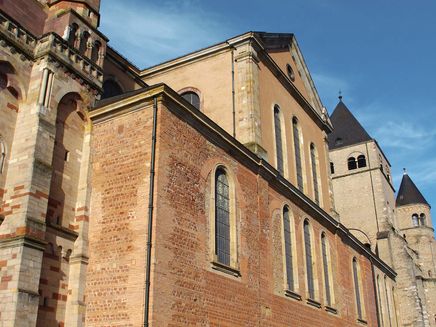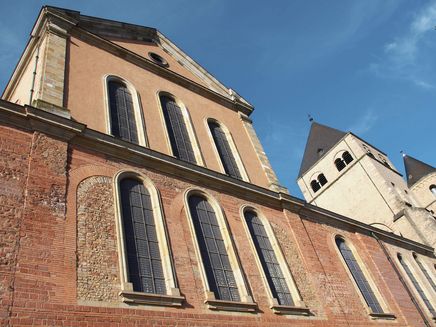Trier Cathedral has been an Episcopal church since the era of the Roman Emperor Constantine. There was already a Christian communityin around 270 AD, and remains of their home church can be viewed today at the excavation site beneath the cathedral information centre. It formed the nucleus for one of the largest church complexes in Roman times. What a spectacular transformation, from the tiny house of worship for members of a persecuted religious minority to such a prestigious large building worthy of an imperial residence! And a monument to the importance the emperors of Trier associated with Christianity. The building was far larger than today's cathedral and the Liebfrauenkirche combined, and reached as far as today's Hauptmarkt. The palace district was located close by.
If you look closely, you can still see the Imperial heritage reflected in the architecture of the cathedral. There are the Roman walls of the core building, which you can see very clearly from Windstraße right beside the cathedral. Or there is the cathedral stone in front of the west portal, the fragment of an ancient granite column. Generations of children have played on them over the years. When you enter through the doorway, you immediately see the altar room with the bishop's seat (the Cathedra) and the Holy Rock Chapel elevated behind it. It is documented that due to his new role the Roman Empire, much of the ancient imperial cult was incorporated into Christianity. Christ is depicted in the same symbolism as the emperor and the sun god Sol, and wears his nimbus (the halo), for example. The bishop acts as his representative. The Cathedra is accordingly designed as a throne. Christ's throne is the altar and is elevated on a pedestal in the apse. The priests and deacons surround the altar at the consecration ceremony as did the closest retainers of the emperor in days gone by.

